|
|
|
|
|
Previous: PRICE T ROWE GROWTH STOCK FUND INC, NSAR-A, EX-27, 2000-08-25 |
Next: PRUDENTIAL VARIABLE CONTRACT ACCOUNT 2, NSAR-A, 2000-08-25 |
SCHEDULE 14A INFORMATION
Proxy
Statement Pursuant to Section 14(a) of
the Securities Exchange Act of 1934 (Amendment No. )
| Filed by the Registrant /x/ |
||
| Filed by a Party other than the Registrant / / | ||
| Check the appropriate box: |
||
| / / | Preliminary Proxy Statement | |
| / / | Confidential, for Use of the Commission Only (as permitted by Rule 14a-6(e)(2)) | |
| /x/ | Definitive Proxy Statement | |
| / / | Definitive Additional Materials | |
| / / | Soliciting Material Pursuant to §240.14a-12 |
|
| Procter & Gamble Co. |
||||
(Name of Registrant as Specified In Its Charter) |
||||
| |
||||
(Name of Person(s) Filing Proxy Statement, if other than the Registrant) |
||||
| Payment of Filing Fee (Check the appropriate box): | ||||
| /x/ | No fee required | |||
| / / | Fee computed on table below per Exchange Act Rules 14a-6(i)(1) and 0-11 | |||
| (1) | Title of each class of securities to which transaction applies: |
|||
| (2) | Aggregate number of securities to which transaction applies: |
|||
| (3) | Per unit price or other underlying value of transaction computed pursuant to Exchange Act Rule 0-11 (set forth the amount on which the filing fee is calculated and state how it was determined): |
|||
| (4) | Proposed maximum aggregate value of transaction: |
|||
| (5) | Total fee paid: |
|||
| / / | Fee paid previously with preliminary materials. | |||
| / / | Check box if any part of the fee is offset as provided by Exchange Act Rule 0-11(a)(2) and identify the filing for which the offsetting fee was paid previously. Identify the previous filing by registration statement number, or the Form or Schedule and the date of its filing. | |||
| (1) | Amount Previously Paid: |
|||
| (2) | Form, Schedule or Registration Statement No.: |
|||
| (3) | Filing Party: |
|||
| (4) | Date Filed: |
|||
![]()
THE PROCTER & GAMBLE COMPANY
Notice of Annual Meeting
and
Proxy Statement
Procter & Gamble Hall
at The Aronoff Center for the Arts
Annual Meeting of Shareholders
October 10, 2000
![]()
THE PROCTER & GAMBLE COMPANY
PO Box 599
Cincinnati, Ohio 45201-0599
August 25, 2000
Fellow P&G Shareholders:
It is our pleasure to invite you to this year's annual meeting of shareholders, which will be held on Tuesday, October 10, 2000.
The meeting will start at 12:00 noon, Eastern Standard Time, in the Procter & Gamble Hall at The Aronoff Center for the Arts, 650 Walnut Street, in Cincinnati.
We appreciate your continued confidence in the Company and look forward to seeing you on October 10.
| Sincerely, | ||
 |
|
 |
| John E. Pepper Chairman of the Board |
A. G. Lafley President and Chief Executive |
![]()
THE PROCTER & GAMBLE COMPANY
PO Box 599
Cincinnati, Ohio 45201-0599
NOTICE OF ANNUAL MEETING OF SHAREHOLDERS
August 25, 2000
| Date: | Tuesday, October 10, 2000 | |
| Time: | 12:00 noon, Eastern Standard Time | |
| Place: | Procter & Gamble Hall, Aronoff Center for the Arts, 650 Walnut Street, Cincinnati, Ohio |
Purposes of the meeting:
Who may attend the meeting:
Only shareholders, persons holding proxies from shareholders, and representatives of the media and financial community may attend the meeting.
Shareholders attending the meeting who are hearing-impaired should identify themselves during registration so they can sit in a special section where an interpreter will be available.
What to bring:
If your shares are registered in your name, you should bring the enclosed admission ticket to the meeting.
If your shares are held in the name of a broker, trust, bank, or other nominee, you will need to bring a proxy or letter from that broker, trust, bank, or nominee that confirms that you are the beneficial owner of those shares.
Record Date:
July 28, 2000 is the record date for the meeting. This means that owners of Procter & Gamble stock at the close of business on that date are entitled to:
Annual Report:
We have mailed a copy of the annual report for the fiscal year that ended June 30, 2000 to each shareholder of record as of July 28, 2000. The annual report is not part of the proxy solicitation materials.
Proxy Voting:
Your vote is important. Please vote your proxy promptly so your shares can be represented, even if you plan to attend the annual meeting. You can vote by telephone, over the internet, or by using the proxy card that is enclosed. Please see your proxy card for specific instructions on how to vote.
Our proxy tabulator, Automatic Data Processing, must receive any proxy that will not be delivered to the annual meeting by 9:00 a.m. on Tuesday, October 10, 2000.
By order of the Board of Directors,
TERRY L. OVERBEY
Secretary
| |
Page |
|
|---|---|---|
| Voting Information | 2 | |
| Election of Directors | 4 | |
| Committees of the Board | 8 | |
| Additional Information Concerning the Board of Directors | 10 | |
| Report of the Compensation Committee on Executive Compensation | 11 | |
| Summary Compensation Table | 14 | |
| Option Grants in Last Fiscal Year | 17 | |
| Aggregated Option/Stock Appreciation Right Exercises in Last Fiscal Year and Fiscal Year-end Option/SAR Values | 18 | |
| Retirement Benefits | 19 | |
| Comparison of Five-year Cumulative Total Return | 20 | |
| Security Ownership of Management and Certain Beneficial Owners | 21 | |
| Section 16(a) Beneficial Ownership Reporting Compliance | 24 | |
| Transactions with Executive Officers, Directors and Others | 24 | |
| Proposal to Ratify Appointment of Independent Auditors | 24 | |
| Shareholder Proposals | 25 | |
| 2001 Annual Meeting Date | 29 | |
| Other Matters | 29 |
This proxy statement and the accompanying proxy card are being mailed to Procter & Gamble shareholders beginning August 25, 2000. We are soliciting your proxy to vote your shares at the 2000 annual meeting of shareholders. We solicit proxies to give all shareholders of record an opportunity to vote on matters that will be presented at the annual meeting. In the following pages of this proxy statement, you will find information on these matters. This information is provided to assist you in voting your shares.
Who can vote?
You can vote if, as of the close of business on Friday, July 28, 2000, you were a shareholder of record of Procter & Gamble's
Each share of Procter & Gamble stock gets one vote. On July 28, 2000 there were issued and outstanding
For The Procter & Gamble Shareholder Investment Program participants:
If you are a participant in The Procter & Gamble Shareholder Investment Program (SIP), you can vote shares of Common Stock held for your account through the SIP custodian.
For The Procter & Gamble Profit Sharing Trust and Employee Stock Ownership Plan participants:
If you are a participant in The Procter & Gamble Profit Sharing Trust and Employee Stock Ownership Plan, you can instruct the trustees of that trust how to vote the shares of stock that are allocated to your account. If you do not vote your shares, the trustee will vote them in proportion to those shares for which they have received voting instructions. Likewise, the trustee will vote shares that have not been allocated to any account in the same manner.
How do I vote by proxy?
Most shareholders can vote by proxy in three ways:
Please see your proxy card or the information your bank, broker, or other holder of record provided you for more information on these options.
2
If you vote by proxy, your shares will be voted in the manner you indicate at the annual meeting. If you sign your proxy card but don't specify how you want your shares to be voted, they will be voted as the Board of Directors recommends.
Can I change my vote after I return my proxy card?
Yes. You can change or revoke your proxy by telephone, internet, or mail at any time before the annual meeting.
Can I vote in person at the annual meeting instead of voting by proxy?
Yes. However, we encourage you to complete and return the enclosed proxy card to ensure that your shares are represented and voted.
Who pays for this proxy solicitation?
We do. We have hired Georgeson Shareholder Communications Inc., a proxy solicitation firm, to assist us in soliciting proxies for a fee of $16,000 plus reasonable expenses. In addition, Procter & Gamble's Directors, officers, and employees may also solicit proxies by mail, telephone, personal contact, telegraph, or through online methods. We will reimburse their expenses for doing this.
We will also reimburse brokers, fiduciaries, and custodians for their costs in forwarding proxy materials to beneficial owners of Procter & Gamble stock. Other proxy solicitation expenses that we will pay include those for preparation, mailing, returning and tabulating the proxies.
3
The Board of Directors is divided into three classes. The classes are as equal in number as is possible depending on the total number of Directors at any time. Each Director serves for a term of three years. The classes are arranged so that the terms of the Directors in each class expire at successive annual meetings. This means that the shareholders elect approximately one-third of the members of the Board of Directors annually.
The terms of Norman R. Augustine, Richard J. Ferris, A. G. Lafley, John F. Smith, Jr., and Marina v.N. Whitman will expire at the 2000 annual meeting. The Board intends to nominate each of these individuals for new terms that will expire at the 2003 annual meeting.
We don't know of any reason why any of these nominees would not accept the nomination. However, if any of the nominees does not accept the nomination, the persons named in the proxy will vote for the substitute nominee that the Board recommends.
The Board of Directors recommends a vote FOR Norman R. Augustine, Richard J. Ferris, A. G. Lafley, John F. Smith, Jr., and Marina v.N. Whitman as Directors to hold office until the 2003 annual meeting of shareholders and until their successors are elected. The Board of Directors will vote proxies FOR all the nominees unless you specify otherwise.
The five candidates receiving the most votes will be elected as members of the Board of Directors.
Nominees for Election as Directors with Terms Expiring in 2003
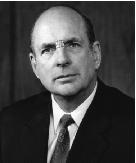 |
|
Norman R. Augustine Director since 1989 Mr. Augustine is Chairman of the Executive Committee of Lockheed Martin Corporation (aerospace, electronics, telecommunications, information management, and energy systems). He is also a Director of Lockheed Martin Corporation, The Black and Decker Corporation, and Phillips Petroleum Company. Age 65. Chairman of the Compensation Committee and member of the Executive and Finance Committees. |
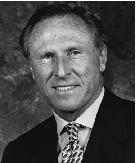 |
|
Richard J. Ferris Director since 1979 Mr. Ferris is retired as Co-Chairman of Doubletree Corporation. He is a Director of BP Amoco Corporation. Age 63. Chairman of the Finance Committee and member of the Executive and Public Policy Committees. |
4
 |
|
A. G. Lafley Director since 2000 Mr. Lafley is President and Chief Executive. Age 53. Member of the Executive Committee. |
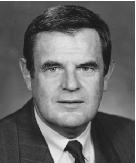 |
|
John F. Smith, Jr. Director since 1995 Mr. Smith is Chairman of the Board of General Motors Corporation (automobile and related businesses). He is also a Director of General Motors Corporation. Age 62. Member of the Audit, Board Organization and Nominating, and Public Policy Committees. |
 |
|
Marina v.N. Whitman, Ph.D Director since 1976 Dr. Whitman is Professor of Business Administration and Public Policy at the University of Michigan. She is also a Director of Alcoa Inc., Chase Manhattan Corporation and its subsidiary Chase Manhattan Bank, and Unocal Corporation. Age 65. Chairman of the Board Organization and Nominating Committee, and member of the Compensation and Finance Committees. |
All of the nominees for election as Directors with terms expiring in 2003, except Dr. Whitman, have been, or were prior to retirement, executive officers of their respective employers for more than the past five years. Prior to her appointment at the University of Michigan effective September 1, 1992, Dr. Whitman was Vice President and Group Executive, General Motors Corporation, for more than five years.
Each of the nominees for election as Directors with terms expiring in 2003 was elected a Director by the shareholders at the annual meeting in 1997 except Mr. Lafley. Mr. Lafley was elected a Director on June 7, 2000 to succeed John C. Sawhill, who passed away on May 18, 2000.
5
Incumbent Directors with Terms Expiring in 2001
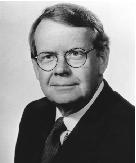 |
|
Joseph T. Gorman Director since 1993 Mr. Gorman is Chairman and Chief Executive Officer of TRW Inc. (automotive, aerospace and information systems). He is also a Director of TRW Inc. and Alcoa Inc. Age 62. Member of the Compensation, Executive, and Finance Committees. |
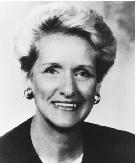 |
|
Lynn M. Martin Director since 1994 Ms. Martin is a Professor at the J. L. Kellogg Graduate School of Management, Northwestern University. She is also a Director of SBC Communications, Inc., Ryder System, Inc., TRW Inc., Dreyfus Funds, and Harcourt General Inc. Age 60. Member of the Finance, Board Organization and Nominating, and Public Policy Committees. |
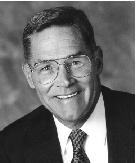 |
|
John E. Pepper Director since 1984 Mr. Pepper is Chairman of the Board. He is also a Director of Boston Scientific Corporation, Motorola, Inc., and Xerox Corporation. Age 62. Chairman of the Executive Committee and member of the Finance and Public Policy Committees. |
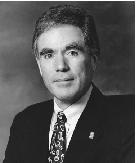 |
|
Ralph Snyderman, M.D. Director since 1995 Dr. Snyderman is Chancellor for Health Affairs and Executive Dean of the School of Medicine at Duke University. He is also President/CEO of Duke University Health System and a Director of Ariad, Inc. and Genta Inc. Age 60. Member of the Audit, Board Organization and Nominating, and Public Policy Committees. |
6
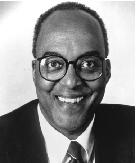 |
|
Robert D. Storey Director since 1988 Mr. Storey is a partner in the law firm of Thompson, Hine & Flory, L.L.P., Cleveland, Ohio. He is also a Director of Verizon Communications and The May Department Stores Company. Age 64. Chairman of the Public Policy Committee and member of the Audit and Board Organization and Nominating Committees. |
All of the Directors with terms expiring in 2001, except Ms. Martin and Mr. Storey, have been executive officers of their respective employers for more than the past five years. Ms. Martin has been a Professor at Northwestern University since 1993. Prior to that, Ms. Martin served as Secretary of Labor of the United States from January, 1991 to January, 1993, following service as a member of the U.S. House of Representatives. Mr. Storey has been a partner in the law firm of Thompson, Hine & Flory since January 1, 1993.
Each of the Directors with terms expiring in 2001 was elected a Director by the shareholders at the annual meeting in 1998.
Incumbent Directors with Terms Expiring in 2002
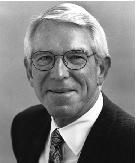 |
|
Donald R. Beall Director since 1992 Mr. Beall is retired Chairman and Chief Executive Officer, Rockwell International Corporation (industrial automation, avionics and communications, and electronic commerce) and Chairman of the Executive Committee. He is a Director of Rockwell International Corporation, ArvinMeritor Inc. and Conexant Systems, Inc. Age 61. Chairman of the Audit Committee and member of the Executive and Public Policy Committees. |
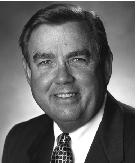 |
|
Gordon F. Brunner Director since 1991 Mr. Brunner is the former Chief Technology Officer of the Company. Age 61. Mr. Brunner has announced his intention to retire on November 1, 2000 after more than 39 years of outstanding service. |
7
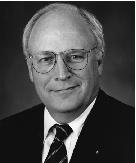 |
|
Richard B. Cheney Director since 1993 Mr. Cheney is former Chairman of the Board and Chief Executive Officer of Halliburton Company (energy services, engineering and construction). He is also a Director of Union Pacific Corporation. Age 59. As a result of Mr. Cheney's nomination as a Vice Presidential candidate, he has taken a leave of absence from the Board and will not attend Board meetings or participate in any Board matters pending the results of the election in November. Member of the Audit, Compensation, and Public Policy Committees. |
 |
|
Charles R. Lee Director since 1994 Mr. Lee is Chairman and Co-Chief Executive Officer of Verizon Communications (telecommunication services). He is also a Director of Verizon Communications, United Technologies Corporation, and USX Corporation. Age 60. Member of the Audit, Board Organization and Nominating, and Compensation Committees. |
All of the Directors with terms expiring in 2002, except Mr. Cheney, have been, or were prior to retirement, executive officers of their respective employers for more than the past five years. Mr. Cheney has been an executive officer of Halliburton Company since October 1, 1995. He was a Senior Fellow at the American Enterprise Institute for Public Policy Research, Washington, DC, from January, 1993 until September 30, 1995. Prior to that, Mr. Cheney was Secretary of Defense of the United States from March 17, 1989 to January 20, 1993.
Each of the Directors with terms expiring in 2002 was elected a Director by the shareholders at the annual meeting in 1999.
The Board of Directors has six committees.
The Executive Committee did not meet during the fiscal year ended June 30, 2000. This committee has the authority to manage Procter & Gamble's business and affairs between meetings of the Board of Directors.
The Audit Committee met five times during the fiscal year ended June 30, 2000 with representatives of Deloitte & Touche LLP, an independent audit firm, and financial management to review accounting, control, auditing and financial reporting matters. This committee's responsibilities include:
8
The Board Organization and Nominating Committee met four times during the fiscal year ended June 30, 2000. This committee's responsibilities include:
Shareholders who wish to communicate with this committee concerning potential Director candidates may do so by corresponding with the Secretary of the Company. These communications should include the name and biographical data of the individual who is the subject of the communication.
The Compensation Committee met seven times during the fiscal year ended June 30, 2000. This committee's responsibilities include:
This committee's authority under the Plan includes selecting key employees to participate in the Plan and determining the numbers of stock options and stock appreciation rights and amounts of restricted and unrestricted stock to be awarded to these employees. The committee is also responsible for the on-going administration and interpretation of the Plan and two plans that it replaced, The Procter & Gamble 1983 Stock Plan and the Plan for Use of Shares in Payment of Remuneration.
The Finance Committee met three times during the fiscal year ended June 30, 2000. This committee's responsibilities include reviewing and making recommendations to the Board on the following matters:
The Public Policy Committee met twice during the fiscal year ended June 30, 2000. This committee's responsibilities include reviewing issues of importance to Procter & Gamble and its stakeholders, including employees, consumers, customers, suppliers, shareholders, governments, and local communities. These issues include:
9
Additional Information Concerning the Board of Directors
During the fiscal year ended June 30, 2000 the Board of Directors held 14 meetings and committees of the Board held a total of 21 meetings. Average attendance at these meetings by nominees and incumbents serving as Directors during the past year was in excess of 91%.
Directors who are Procter & Gamble employees do not receive Directors' fees. During the fiscal year ended June 30, 2000, Directors who were not employees received the following compensation:
Directors who are not employees also receive insurance coverage in the amount of $750,000 payable in the event of accidental death or disability occurring while traveling on P&G business. Non-employee Directors are also reimbursed for the expenses of business travel.
If a non-employee Director chooses to come under The Procter & Gamble Deferred Compensation Plan for Directors, fees payable to the Director are credited to the Director's account but not funded. Interest is credited to the account at the end of each month at the prime rate then in effect at Morgan Guaranty Trust Company of New York. This type of deferred compensation account is payable either upon the retirement of the Director or after a term of years specified by the Director.
As part of its overall program of support for charitable institutions and as an aid in attracting and retaining qualified Directors, the Board of Directors has a Charitable Gifts Program funded by life insurance on the lives of the non-employee members of the Board of Directors and the Chairman of the Board and the Chief Executive. Directors receive no financial benefit from the program, because the Company receives all insurance proceeds and charitable deductions. Under this program, the Company makes charitable contributions of up to a total of $1 million following the death of a participant. These contributions are divided among up to five charitable organizations that the participant recommends. The following current and retired Directors are participants in this program: David M. Abshire, Edwin L. Artzt, Norman R. Augustine, Donald R. Beall, Theodore F. Brophy, Richard B. Cheney, Richard J. Ferris, Joseph T. Gorman, Robert A. Hanson, Durk I. Jager, A. G. Lafley, Joshua Lederberg, Charles R. Lee, Lynn M. Martin, John E. Pepper, David M. Roderick, John G. Smale, John F. Smith, Jr., Ralph Snyderman, Robert D. Storey and Marina v.N. Whitman.
The charitable organizations selected to receive contributions under this program must be tax-exempt under Section 501(c)(3) of the Internal Revenue Code, and donations that we make will be deductible against our federal and other income taxes payable in accordance with the tax laws applicable at the time. Because of such deductions and use of insurance, the program should result in little or no long-term cost to Procter & Gamble under present law.
10
Report of the Compensation Committee of the
Board of Directors on Executive Compensation
Overview
The Compensation Committee of the Board of Directors (the "Committee") consists entirely of outside, non-employee Directors. The Committee establishes and regularly reviews executive compensation levels and policies, and authorizes short- and long-term awards in the form of cash or stock. All awards are made within the authority of the Additional Remuneration Plan, which dates back to 1949, and The Procter & Gamble 1992 Stock Plan.
Compensation for executives is based on the principles that compensation must (a) be competitive with other quality companies in order to help attract, motivate and retain the talent needed to lead and grow Procter & Gamble's business; (b) provide a strong incentive for key managers to achieve the Company's goals; and (c) make prudent use of the Company's resources. Procter & Gamble has an enviable record of recruiting, retaining and developing its executive talent from within—an achievement few other corporations have matched.
Executive compensation is based on performance against a combination of financial and non-financial measures including business results and developing organizational capacity. In addition, executives are expected to uphold the fundamental principles embodied in the Company's Statement of Purpose, Values and Principles plus the Sustainability Report and the Environmental Quality Policy. These include a commitment to integrity, doing the right thing, maximizing the development of each individual, developing a diverse organization, and continually improving the environmental quality of our products and operations. In upholding these objectives, executives not only contribute to their own success, but also help ensure the Company's business, employees, shareholders and the communities in which we live and work will prosper.
Elements of Executive Compensation
It is the Company's long-standing policy that variable, at-risk compensation, both annual and long-term, should make up a significant portion of executive compensation. Depending upon the level of the executive, the Company targets between 40% and 80% of executive compensation to be variable, at-risk elements. When the incentive plans payout at target, the executive compensation levels will be expected to equal the middle compensation range for a comparative group of companies. This group includes leading consumer products companies and other corporations of size and reputation comparable to Procter & Gamble and with whom Procter & Gamble must compete in hiring and retaining employees. The composition of this group is updated periodically in order to assure its continued relevance.
The Committee believes the compensation levels of the Company's executive officers are competitive and in line with those of comparable companies. This conclusion is derived in part from consultations and surveys by independent outside compensation consultants, with whom the Committee meets annually.
Beginning in fiscal 1999-00, consistent with the Company's compensation principles the Committee approved a number of revisions to the Company's executive compensation program. The changes simplify the compensation program and encourage outstanding results and support the commitment to accelerated long-term sales and profit growth. The new program places more pay at risk, providing greater rewards for superior performance with more corresponding downside risk. Annual compensation elements for fiscal 1999-00 include base salary and an annual incentive plan called the Short-Term Achievement Reward (STAR). Long-term incentive compensation includes stock options and a Long-term Equity Appreciation Plan (LEAP) award based on total shareholder return relative to a peer group of companies.
In addition, executives participating in The Procter & Gamble Profit Sharing Trust and Employee Stock Ownership Plan receive retirement awards in the form of stock restricted (non-transferable and subject to forfeiture) until retirement. These awards make up the difference between the Internal Revenue Code limit
11
on contributions that can be made to that Plan and what would otherwise be contributed by the Company to the executive's retirement account. The Procter & Gamble Profit Sharing Trust and Employee Stock Ownership Plan is a qualified plan providing retirement benefits for U.S.-based employees.
Annual Compensation
Annual compensation consists of base salary and the Short-Term Achievement Reward (STAR).
Executive base salary ranges are established based on a careful examination of survey data, from a comparative group of companies, gathered by a leading consulting firm specializing in executive compensation. A number, but not all, of these companies are included in the composite group index shown on the performance graph. Salary ranges are targeted to be in the middle of this select group of companies. Within the established range structure, the Committee approves changes in amounts of base salary considering individual performance evaluations and time in position.
The Short-Term Achievement Reward is based on a combination of two factors, the Company's results and the business unit's results for the fiscal year. The Company factor is based on sales growth and total shareholder return relative to the Company's competitive peer group. The business unit factor is based on a retrospective assessment of business unit performance. This assessment is similar to a balanced score card approach.
Senior management and the Committee believe that differences in performance should result in significantly different levels of annual compensation.
Long-Term Incentives
Long-term incentives consist of stock options and Long-term Equity Appreciation (LEAP) awards. Both types of awards serve to focus executive attention on the long-term performance of the Company.
Stock options are awarded only to employees who have demonstrated a capacity for contributing in a substantial way to the success of the Company. Stock options encourage these managers to act as owners of the business, which helps to further align their interests with the shareholders' interests. The Company makes stock option grants annually at no less than 100% of the market price on the date of grant. Stock appreciation rights (SARs) are granted instead of options in countries where the holding of foreign stock is restricted. Stock option grants and SARs are fully exercisable after three years and have a 15-year life. The target number of shares to be awarded to an individual is based on the individual's total short-term compensation and the corresponding competitive grant values of our comparitor companies. This target amount is then adjusted by up to plus or minus 50% based on the individual's performance. The number of option shares currently held by each executive is not considered in determining awards. Options have no value unless the price of the Company's stock increases, and they are exercisable only by the employee and cannot be transferred except in case of death.
The Long-term Equity Appreciation Plan places a portion of top executives' long-term compensation at risk based on the Company's Total Shareholder Return (TSR) relative to a peer group of companies as measured over the most recent three-year period. To calculate TSR, the average stock price for the year prior to the start of the three-year performance period (FY 96/97) is compared with the average stock price for the third year of the three-year cycle (FY 99/00). It is also assumed that all dividends paid over the three-year period are reinvested in shares on the date paid. When the Company's TSR performance relative to the comparitor group of companies is in the top half, awards at or above target can be earned. No awards are paid for ranking in the bottom one-third of the peer group. Awards are generally made in the form of stock, stock restricted until retirement, or as stock options in accordance with the terms of the 1992 Stock Plan.
12
Share Retention Program
The Company believes the interests of the Company and its employees are inseparable. One of the ways this is demonstrated is through share ownership and ownership behavior. Globally, employees and retirees currently own about one-fifth of Procter & Gamble's outstanding shares. This is believed to be significantly higher than most other major corporations and serves to create a strong focus on the long-term growth of the Company and its stock.
To support the Company's desire to increase management's stock ownership, in 1993 the Committee approved a share retention program for its most senior managers. Under this program, participants are to achieve and then retain a multiple of their base salary in shares of Procter & Gamble stock. Higher level managers are expected to retain a larger multiple. The Chief Executive's multiple is three times base salary. Shares held in The Procter & Gamble Profit Sharing Trust and Employee Stock Ownership Plan are not counted towards the achievement of these ownership targets.
Limitation of Deductions
Regarding the limitation of deductions available for compensation paid to the Company's named executives under Internal Revenue Code Section 162(m), stock option and SAR grants under the 1992 Stock Plan meet the requirements for deductible compensation. Accordingly, the Committee granted all of the named executives' Short-Term Achievement Reward and Long-term Equity Appreciation Plan awards in the form of stock options or retirement restricted stock both of which avoid the loss of deductibility related to such compensation. The Executive Compensation Tables provide further details. With these adjustments, the potential tax liability from any loss of deductibility is nominal.
Compensation of the Chief Executive
At Mr. Jager's request, his base salary was not increased during the 1999-2000 fiscal year and on June 8, 2000, Mr. Jager announced his intention to retire from the Company effective July 1, 2000. Mr. Jager received a regular annual award of stock options on September 15, 1999, which as with other optionees, was based on his previous year's (1998/99) performance.
In association with Mr. Jager's retirement on July 1, 2000, the Committee approved a one time payment. In determining this payment, the Committee considered a number of factors, including: the level of services and commitments to be provided by Mr. Jager following his retirement; arrangements provided by other companies to retiring chief executive officers; Mr. Jager's loyal and distinguished service to the Company for 30 years; Mr. Jager's level of total compensation prior to his retirement; and certain incentive payments for which Mr. Jager may have been eligible. This payment is described under "Other Compensation Matters", on page 19.
While Mr. Lafley became President and Chief Executive effective June 8, 2000, his compensation package was totally based on his responsibilities as President-Global Beauty Care and North America.
| Norman R. Augustine, Chairman | Charles R. Lee | |||
| Richard B. Cheney | Marina v.N. Whitman | |||
| Joseph T. Gorman |
13
The following tables and notes present the compensation provided by the Company to its Chief Executive officer, and to each of the Company's four most highly compensated executive officers, other than the Chief Executive, for services rendered in all capacities to the Company for the fiscal years ended June 30, 2000, 1999 and 1998.
SUMMARY COMPENSATION TABLE
(Dollar figures shown in thousands)
| |
|
|
|
|
Long-Term Compensation Awards |
|
||||||||||||
|---|---|---|---|---|---|---|---|---|---|---|---|---|---|---|---|---|---|---|
| |
Annual Compensation |
|
Securities Underlying Options/ SARs (4) |
|
||||||||||||||
| |
Restricted Stock Awards (3) |
|
||||||||||||||||
| Name and Principal Position |
Year |
Salary |
Bonus (1) |
Other Annual Compensation (2) |
All Other Compensation (5) |
|||||||||||||
| Durk I. Jager | 1999-00 | $ | 1,318.3 | $ | 0 | $ | 0 | 0 | 288,851 | $ | 9,859.5 | |||||||
| Former Chairman | 1998-99 | 1,318.3 | 0 | (6) | 0 | 0 | 145,006 | 350.6 | ||||||||||
| of the Board, | 1997-98 | 1,185.0 | 0 | (7) | 0 | 0 | 158,336 | 306.0 | ||||||||||
| President and Chief | ||||||||||||||||||
| Executive | ||||||||||||||||||
| A. G. Lafley |
|
1999-00 |
|
|
799.1 |
|
|
0 |
(8) |
|
0 |
|
0 |
|
97,313 |
|
|
255.4 |
| President and Chief | 1998-99 | 712.9 | 250.0 | (9) | 126.9 | (10) | 0 | 49,642 | 597.4 | |||||||||
| Executive | 1997-98 | 635.0 | 336.6 | (11) | 178.9 | (10) | 0 | 63,237 | 742.2 | |||||||||
| Wolfgang C. Berndt |
|
1999-00 |
|
|
850.0 |
|
|
0 |
(12) |
|
184.8 |
(10) |
0 |
|
99,198 |
|
|
202.0 |
| President-Global | 1998-99 | 765.3 | 340.0 | (13) | 334.6 | (10) | 0 | 50,404 | 241.3 | |||||||||
| Fabric & Home Care | 1997-98 | 711.7 | 0 | (14) | 122.1 | (10) | 0 | 83,675 | 230.2 | |||||||||
| Jorge P. Montoya |
|
1999-00 |
|
|
795.0 |
|
|
0 |
(15) |
|
(39.8) |
(10) |
0 |
|
92,136 |
|
|
259.5 |
| President-Global | 1998-99 | 730.7 | 0 | (16) | 218.1 | (10) | 624.0 | 34,791 | 242.0 | |||||||||
| Food & Beverage | 1997-98 | 655.1 | 0 | (17) | 249.5 | (10) | 476.8 | 66,708 | 86.6 | |||||||||
| and Latin America | ||||||||||||||||||
| Gordon F. Brunner |
|
1999-00 |
|
|
640.0 |
|
|
0 |
(18) |
|
0 |
|
0 |
|
68,295 |
|
|
178.0 |
| Chief Technology | 1998-99 | 610.0 | 0 | (19) | 0 | 290.0 | 40,963 | 166.1 | ||||||||||
| Officer | 1997-98 | 580.0 | 0 | (20) | 0 | 406.0 | 56,655 | 152.6 | ||||||||||
| R. Kerry Clark |
|
1999-00 |
|
|
576.7 |
|
|
0 |
(21) |
|
(69.5) |
(10) |
0 |
|
67,102 |
|
|
388.4 |
| President-Global | 1998-99 | 506.7 | 0 | (22) | 100.7 | (10) | 0 | 42,390 | 373.0 | |||||||||
| Market Development | 1997-98 | 440.0 | 411.8 | (23) | 0 | 0 | 32,155 | 108.0 | ||||||||||
| Organization | ||||||||||||||||||
14
| Name |
Profit Sharing and Related Contributions |
Flexible Compensation Program Contributions |
Imputed Income |
International Assignment Equalization Payments |
Other Payments |
Total All Other Compensation |
||||||||||||
|---|---|---|---|---|---|---|---|---|---|---|---|---|---|---|---|---|---|---|
| Durk I. Jager | $ | 300.1 | $ | 52.7 | $ | 6.7 | $ | 0 | $ | 9,500.0 | $ | 9,859.5 | ||||||
| A. G. Lafley | 182.9 | 21.4 | 1.5 | 49.6 | 0 | 255.4 | ||||||||||||
| Wolfgang C. Berndt | 0 | 0 | 2.6 | 199.4 | 0 | 202.0 | ||||||||||||
| Jorge P. Montoya | 182.2 | 28.6 | 1.7 | 47.0 | 0 | 259.5 | ||||||||||||
| Gordon F. Brunner | 146.5 | 24.4 | 7.1 | 0 | 0 | 178.0 | ||||||||||||
| R. Kerry Clark | 138.1 | 20.3 | .8 | 229.2 | 0 | 388.4 | ||||||||||||
15
16
OPTION GRANTS IN LAST FISCAL YEAR
(Dollar figures shown in thousands)
| |
|
% of Total Options Granted to Employees in Fiscal Year |
|
|
Potential Realizable Value at Assumed Annual Rates of Stock Price Appreciation for Option Term (2) |
||||||||||
|---|---|---|---|---|---|---|---|---|---|---|---|---|---|---|---|
| |
Number of Securities Underlying Options Granted (1) |
|
|
||||||||||||
| |
Exercise or Base Price |
Expiration Date |
|||||||||||||
| Name |
|
(a) 5% |
|
(b) 10% |
|||||||||||
| Durk I. Jager(3) | 228,851 | 1.7% | $ | 99.7188 | 9/15/14 | $ | 24,621.9 | $ | 72,507.2 | ||||||
| A. G. Lafley(4) | 75,761 | 0.6% | $ | 99.7188 | 9/15/14 | 8,151.1 | 24,003.5 | ||||||||
| 21,552 | 0.2% | $ | 55.3125 | 7/10/15 | 1,286.2 | 3,787.6 | |||||||||
| Wolfgang C. Berndt(5) | 76,722 | 0.6% | $ | 99.7188 | 9/15/14 | 8,254.5 | 24,307.9 | ||||||||
| 22,476 | 0.2% | $ | 55.3125 | 7/10/15 | 1,341.3 | 3,950.0 | |||||||||
| Jorge P. Montoya | 70,320 | 0.5% | $ | 99.7188 | 9/15/14 | 7,565.7 | 22,279.6 | ||||||||
| 21,816 | 0.2% | $ | 55.3125 | 7/10/15 | 1,301.9 | 3,834.0 | |||||||||
| Gordon F. Brunner(6) | 50,577 | 0.4% | $ | 99.7188 | 9/15/14 | 5,441.6 | 16,024.4 | ||||||||
| 17,718 | 0.1% | $ | 55.3125 | 7/10/15 | 1,057.4 | 3,113.8 | |||||||||
| R. Kerry Clark(7) | 50,707 | 0.4% | $ | 99.7188 | 9/15/14 | 5,455.5 | 16,065.6 | ||||||||
| 16,395 | 0.1% | $ | 55.3125 | 7/10/15 | 978.4 | 2,881.3 | |||||||||
17
AGGREGATED OPTION/STOCK APPRECIATION RIGHT (SAR)
EXERCISES IN LAST FISCAL YEAR
AND FISCAL YEAR-END OPTION/SAR VALUES(1)
(Dollar figures shown in thousands)
| |
|
|
Number of Securities Underlying Unexercised Options/SARs at FY End |
|
|
||||||||||
|---|---|---|---|---|---|---|---|---|---|---|---|---|---|---|---|
| |
|
|
Value of Unexercised In-the-Money Options/SARs at FY End (3) |
||||||||||||
| |
Shares Acquired on Exercise |
|
|||||||||||||
| |
Value Realized (2) |
||||||||||||||
| Name |
Exercisable |
Unexercisable |
Exercisable |
Unexercisable |
|||||||||||
| Durk I. Jager | 70,000 | $ | 3,654.7 | 832,448 | 373,857 | $ | 10,876.3 | $ | 0 | ||||||
| A. G. Lafley | 23,000 | 677.1 | 246,775 | 146,955 | $ | 6,192.3 | 0 | ||||||||
| Wolfgang C. Berndt | 42,000 | 3,088.3 | 445,967 | 149,602 | $ | 1,362.1 | 0 | ||||||||
| Jorge P. Montoya | 35,000 | 2,630.0 | 211,538 | 126,927 | $ | 2,345.4 | 0 | ||||||||
| Gordon F. Brunner | 48,000 | 4,309.5 | 355,597 | 109,258 | $ | 5,249.0 | 0 | ||||||||
| R. Kerry Clark | 21,200 | 1,222.9 | 139,687 | 109,492 | $ | 1,753.0 | 0 | ||||||||
18
Retirement benefits for U.S.-based executive officers are provided primarily by The Procter & Gamble Profit Sharing Trust and Employee Stock Ownership Plan. These are defined contribution plans. Under the rules set by the Securities and Exchange Commission, these Company contributions are included in the Summary Compensation Table in the "All Other Compensation" column (see footnote (5) to such Table). In addition, Mr. Jager is enrolled in the Pension Plan of Procter & Gamble Benelux N.V. (Netherlands Branch), where he joined the Company. Mr. Clark is enrolled in the pension plans of Procter & Gamble Canada, Inc. Messrs. Montoya and Clark are also enrolled in a supplemental retirement plan for U.S.-based managers who previously participated in pension plans of international subsidiaries. Mr. Berndt is enrolled in the Pension Plan of Procter & Gamble GmbH (Germany). Mr. Berndt was a participant in the Austrian pension plan and enrolled in the supplemental plan for Germans who previously participated in other pension plans. These Plans are defined benefit plans funded by book reserves or insurance contracts in order to pay retirement benefits in cash. Given their age and service with the Company, their estimated annual benefit, if payable in the form of a straight annuity upon retirement at age 65, would be $849,535 for Mr. Berndt, $160,353 for Mr. Montoya, and $159,147 for Mr. Clark. A lump sum payment of $3,743,448 was made to Mr. Jager on July 28, 2000, in fulfillment of the Company's retirement benefit obligation under the supplemental plan.
Other Compensation Matters
In connection with Mr. Jager's retirement as Chairman of the Board, President and Chief Executive and his agreement not to compete with the Company through June 30, 2003, as well as Mr. Jager's agreement to provide consulting services and continued support on other business matters, the Compensation Committee approved a one-time payment of $9,500,000 for Mr. Jager. In determining this payment, the Committee considered a number of factors, including: the level of services and commitments to be provided by Mr. Jager following his retirement; arrangements provided by other companies to retiring chief executive officers; Mr. Jager's loyal and distinguished service to the Company for 30 years; Mr. Jager's level of total compensation prior to his retirement; and certain incentive payments for which Mr. Jager may have been eligible.
19
Comparison of Five-year Cumulative Total Return
The following graph compares the five-year cumulative total return of the Company's Common Stock as compared with the S&P 500 Stock Index and a composite of the S&P Household Products Index, the S&P Paper & Forest Products Index, the S&P Personal Care Index, the S&P Health Care Diversified Index and the S&P Foods Index weighted based on the Company's current fiscal year revenues.
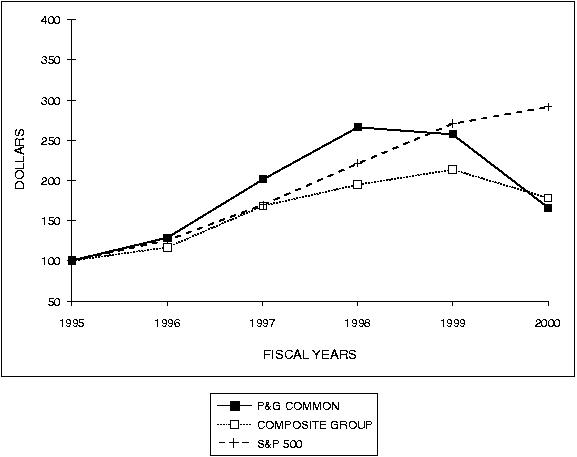
The graph assumes a $100 investment made on July 1, 1995 and the reinvestment of all dividends, as follows:
| |
Dollar Value of $100 Investment at June 30 |
|||||||||||||||||
|---|---|---|---|---|---|---|---|---|---|---|---|---|---|---|---|---|---|---|
| |
1995 |
1996 |
1997 |
1998 |
1999 |
2000 |
||||||||||||
| P&G Common | $ | 100.00 | $ | 129.37 | $ | 201.23 | $ | 266.51 | $ | 257.54 | $ | 165.98 | ||||||
| Composite Group | $ | 100.00 | $ | 117.47 | $ | 168.20 | $ | 194.53 | $ | 213.47 | $ | 178.23 | ||||||
| S&P 500 | $ | 100.00 | $ | 126.06 | $ | 169.63 | $ | 220.86 | $ | 271.05 | $ | 291.38 | ||||||
20
Security Ownership of Management and Certain Beneficial Owners
The following tables give information concerning the beneficial ownership of the Company's Common and Series A and B ESOP Convertible Class A Preferred Stock by all Directors and nominees, each named executive, all Directors and executive officers as a group, and the owners of more than five percent of the outstanding Series A and B ESOP Convertible Class A Preferred Stock, on July 28, 2000:
| |
Amount and Nature of Beneficial Ownership |
|
||||||
|---|---|---|---|---|---|---|---|---|
| Owner |
|
Direct (1) and Profit Sharing Plan (2) |
|
Right to Acquire (3) |
|
Trusteeships and Family Holdings (4) |
|
Percent of Class |
| Norman R. Augustine | 13,036 | 8,000 | — | (5) | ||||
| Donald R. Beall | 7,359.0 | 8,000 | 15,195 | (5) | ||||
| Wolfgang C. Berndt | 26,132.0 | 445,967 | — | (5) | ||||
| Gordon F. Brunner | 154,807.3 | 355,497 | 200 | (5) | ||||
| Richard B. Cheney | 5,606.0 | 8,000 | 2,800 | (5) | ||||
| R. Kerry Clark | 46,392.7 | 139,687 | 2,312 | (5) | ||||
| Richard J. Ferris | 37,250.0 | 8,000 | 94,000 | (5) | ||||
| Joseph T. Gorman | 9,557.0 | 8,000 | 2,000 | (5) | ||||
| Durk I. Jager | 181,070.3 | 832,448 | — | (5) | ||||
| A. G. Lafley | 70,257.7 | 246,775 | 3,504 | (5) | ||||
| Charles R. Lee | 17,080.0 | 8,000 | — | (5) | ||||
| Lynn M. Martin | 4,380.0 | 8,000 | — | (5) | ||||
| Jorge P. Montoya | 68,636.7 | 211,538 | 70,558 | (5) | ||||
| John E. Pepper | 853,690.0 | 884,012 | 576 | (5) | ||||
| John F. Smith, Jr. | 7,976.0 | 6,000 | — | (5) | ||||
| Ralph Snyderman | 6,648.0 | 6,000 | — | (5) | ||||
| Robert D. Storey | 3,607.0 | 2,000 | — | (5) | ||||
| Marina v.N. Whitman | 6,617.0 | 8,000 | 3,600 | (5) | ||||
| 27 Directors and executive officers, as a group |
|
2,120,701.1 |
|
4,594,551 |
|
202,227 |
|
.530% |
21
SERIES A ESOP CONVERTIBLE CLASS A PREFERRED STOCK
| |
Amount and Nature of Beneficial Ownership |
|
||||
|---|---|---|---|---|---|---|
| Owner |
|
Profit Sharing Plan (1) |
|
Trusteeships |
|
Percent of Series |
| Norman R. Augustine | — | — | — | |||
| Donald R. Beall | — | — | — | |||
| Wolfgang C. Berndt | — | — | — | |||
| Gordon F. Brunner | 8,245.4 | — | (2) | |||
| Richard B. Cheney | — | — | — | |||
| R. Kerry Clark | 4,092.9 | — | (2) | |||
| Richard J. Ferris | — | — | — | |||
| Joseph T. Gorman | — | — | — | |||
| Durk I. Jager | 8,194.3 | — | (2) | |||
| A. G. Lafley | 6,498.7 | — | (2) | |||
| Charles R. Lee | — | — | — | |||
| Lynn M. Martin | — | — | — | |||
| Jorge P. Montoya | 6,617.3 | — | (2) | |||
| John E. Pepper | — | — | — | |||
| John F. Smith, Jr. | — | — | — | |||
| Ralph Snyderman | — | — | — | |||
| Robert D. Storey | — | — | — | |||
| Marina v.N. Whitman | — | — | — | |||
| 27 Directors and executive officers, as a group |
|
94,897.2 |
|
— |
|
.170% |
| Employee Stock Ownership Trust of The Procter & Gamble Profit Sharing Trust and Employee Stock Ownership Plan, PO Box 599, Cincinnati, Ohio 45201-0599 (G. V. Dirvin, E. H. Eaton, Jr. and C. C. Carroll, Trustees) |
|
— |
|
22,315,980.0(3) |
|
40.01% |
22
SERIES B ESOP CONVERTIBLE CLASS A PREFERRED STOCK
| |
Amount and Nature of Beneficial Ownership |
|
|||||
|---|---|---|---|---|---|---|---|
| Owner |
Profit Sharing Plan (1) |
Trusteeships |
Percent of Series |
||||
| Norman R. Augustine | — | — | — | ||||
| Donald R. Beall | — | — | — | ||||
| Wolfgang C. Berndt | — | — | — | ||||
| Gordon F. Brunner | 602.0 | — | (2) | ||||
| Richard B. Cheney | — | — | — | ||||
| R. Kerry Clark | — | — | — | ||||
| Richard J. Ferris | — | — | — | ||||
| Joseph T. Gorman | — | — | — | ||||
| Durk I. Jager | 260.6 | — | (2) | ||||
| A. G. Lafley | — | — | — | ||||
| Charles R. Lee | — | — | — | ||||
| Lynn M. Martin | — | — | — | ||||
| Jorge P. Montoya | — | — | — | ||||
| John E. Pepper | 577.6 | — | (2) | ||||
| John F. Smith, Jr. | — | — | — | ||||
| Ralph Snyderman | — | — | — | ||||
| Robert D. Storey | — | — | — | ||||
| Marina v.N. Whitman | — | — | — | ||||
| 27 Directors and executive officers, as a group |
|
1,440.2 |
|
— |
|
.0039 |
% |
| Employee Stock Ownership Trust of The Procter & Gamble Profit Sharing Trust and Employee Stock Ownership Plan, PO Box 599, Cincinnati, Ohio 45201-0599 (G. V. Dirvin, E. H. Eaton, Jr. and C. C. Carroll, Trustees) |
|
— |
|
28,424,016.0 |
(3) |
76.65 |
% |
23
Section 16(a) Beneficial Ownership Reporting Compliance
Ownership of and transactions in Company stock by executive officers and Directors of the Company are required to be reported to the Securities and Exchange Commission pursuant to Section 16 of the Securities Exchange Act. On April 11, 2000, Charles R. Lee, a Director, filed a Form 4 for March, 2000 to correct an inadvertent failure to report 5,000 shares acquired on March 17, 2000 directly owned by Mr. Lee. On July 28, 2000, Richard L. Antoine, an executive officer, filed a Form 5 for fiscal year ended June 30, 2000 to correct inadvertent failures to report the direct ownership of an additional 1.283 shares on his Form 3 of January 1, 1998; the acquisition on February 27, 1998 of 59.364 shares held in direct ownership; the disposition on December 23, 1998, via a gift, of 24 shares formerly held in direct ownership; and the sale on June 17, 1999 of 0.749 shares formerly held in direct ownership.
Transactions with Executive Officers, Directors and Others
During the past fiscal year, the Company and its subsidiaries had no transaction in which any Director, or any member of the immediate family of any Director, had a material direct or indirect interest reportable under applicable rules of the Securities and Exchange Commission. In the normal course of business the Company had transactions with other corporations where certain Directors are or were executive officers; and the Company utilized the services of the law firm of Thompson, Hine & Flory in which Robert D. Storey, a Director, is a partner. None of the aforementioned matters was material in amount as to the Company, the corporations or the law firm.
During the past fiscal year, the Company and its subsidiaries had no transactions in which any executive officer of the Company, or any member of the immediate family of any such executive officer, had a material direct or indirect interest reportable under applicable rules of the Securities and Exchange Commission.
Proposal to Ratify Appointment of Independent Auditors
The Board of Directors, acting upon the recommendation of the Audit Committee of the Board, has appointed the firm of Deloitte & Touche LLP as the Company's independent auditors for fiscal year 2000-01. Although action by the shareholders in this matter is not required, the Board believes that it is appropriate to seek shareholder ratification of this appointment in light of the critical role played by independent auditors in maintaining the integrity of Company financial controls and reporting.
One or more representatives of Deloitte & Touche LLP will be in attendance at the annual meeting on October 10, 2000. The representatives will have the opportunity to make a statement, if desired, and will be available to respond to appropriate questions from shareholders.
The following proposal will therefore be presented for action at the annual meeting by direction of the Board of Directors:
RESOLVED, That action by the Board of Directors appointing Deloitte & Touche LLP as the Company's independent auditors to conduct the annual audit of the financial statements of the Company and its subsidiaries for the fiscal year ending June 30, 2001 is hereby ratified, confirmed and approved.
The Board of Directors recommends a vote FOR this resolution.
The affirmative vote of a majority of shares participating in the voting on this proposal is required for adoption of this resolution. Proxies will be voted FOR the resolution unless the Proxy Committee is instructed otherwise on a proxy returned to such Committee. Abstentions indicated on such a proxy card will not be counted as either "for" or "against" this proposal.
24
Shareholder Proposal No. 1
Evelyn Y. Davis, Watergate Office Building, 2600 Virginia Avenue, N.W., Suite 215, Washington, DC 20037, owning 400 shares of Common Stock of the Company, has given notice that she intends to present for action at the annual meeting the following resolution:
RESOLVED: That the stockholders of P&G recommend that the Board of Directors take the necessary steps to reinstate the election of directors ANNUALLY, instead of the stagger system which was recently adopted.
Mrs. Davis has submitted the following statement in support of her resolution:
REASONS: Until recently, directors of P&G were elected annually by all shareholders.
The great majority of New York Stock Exchange listed corporations elect all their directors each year.
This insures that ALL directors will be more accountable to ALL shareholders each year and to a certain extent prevents the self-perpetuation of the Board.
Last year the owners of 416,736,482 shares, representing approximately 40.4% of shares voting, voted FOR this proposal.
If you AGREE, please mark your proxy FOR this resolution.
The Board of Directors recommends a vote AGAINST this resolution for the following reasons:
The shareholders of Procter & Gamble decided, by action at the annual meeting of shareholders in 1985, that its Board of Directors shall be divided into three classes with Directors elected to staggered three-year terms. This was to insure continuity of experienced Board members.
This exercise by Procter & Gamble shareholders of their rightful role in corporate governance has been challenged with this same resolution at every annual meeting since 1986. On each of these occasions, the shareholders confirmed that they wanted to retain the continuity of experienced Directors by having a classified Board of Directors with staggered terms.
In each such year they defeated the proposal to return to annual election of the entire Board, with over 59% voting against it at the most recent shareholders meeting. We believe this affirms the Board's view that the current system of election is working effectively.
This year's resolution and the arguments in support of it are identical to those in prior years. The Board of Directors agrees with the results of previous shareholder voting on this issue and again recommends a vote AGAINST the proposal.
The affirmative vote of a majority of shares participating in the voting on this proposal is required for adoption of this resolution. Proxies will be voted AGAINST the resolution unless the Proxy Committee is instructed otherwise on a proxy returned to such Committee. Abstentions indicated on such a proxy card will not be counted as either "for" or "against" this proposal. "Broker non-votes" specified on proxies returned by brokers holding shares for beneficial owners who have not provided instructions as to voting on this issue will be treated as not present for voting on this issue.
25
Shareholder Proposal No. 2
Lenore Goldman, c/o Harrington Investments, Inc., 1001 Second Street, Suite 325, Napa, CA 94559, owning 1,240 shares of Common Stock of the Company, has given notice that she intends to present for action at the annual meeting the following resolution:
WHEREAS:
International markets for genetically engineered (GE) foods are threatened by extensive resistance;
There is scientific concern that genetically engineered agricultural products may be harmful to humans, animals, or the environment;
In the U.S., we have a long tradition of citizens' "Right to Know"; and expression of this includes the current laws requiring nutritional labeling of foods;
26
RESOLVED: Shareholders request the Board of Directors to adopt a policy of removing genetically engineered crops, organisms, or products thereof from all products sold or manufactured by the company, where feasible, until long-term safety testing has shown that they are not harmful to humans, animals, and the environment; with the interim step of labeling and identifying these products that may contain these ingredients, and reporting to the shareholders by August 2001.
The Board of Directors recommends a vote AGAINST this resolution for the following reasons:
When it comes to our products, consumer safety is paramount. We firmly believe that all our food products, including those which may contain ingredients developed through biotechnology, are safe.
The U.S. Food and Drug Administration (FDA), U.S. Department of Agriculture and U.S. Environmental Protection Agency have determined that currently approved foods derived from modern biotechnology are as safe as conventional foods. The FDA has also decided that special labeling is required only if these foods contain allergens or are nutritionally different from their conventional counterparts. None of our foods meets these criteria.
Simply removing the option of using genetically engineered ingredients for our food brands offers no clear benefit for our consumers—or our business. Doing so could even put P&G at a competitive disadvantage because we would not have the opportunity to use the full range of ingredient supplies available to us.
What's more, we would be turning our backs on the benefits of biotechnology in foods, such as reducing the use of pesticides, creating more nutritious foods and finding new ways to help feed the world. The proponents don't address these and other potential future benefits.
We respect the views of those who question the value of biotechnology in foods. At the same time, we're convinced our food brands are safe. Our consumers can count on that.
The Board of Directors recommends a vote AGAINST this proposal.
The affirmative vote of a majority of shares participating in the voting on this proposal is required for adoption of this resolution. Proxies will be voted AGAINST the resolution unless the Proxy Committee is instructed otherwise on a proxy returned to such Committee. Abstentions indicated on such a proxy card will not be counted as either "for" or "against" this proposal. "Broker non-votes" specified on proxies returned by brokers holding shares for beneficial owners who have not provided instructions as to voting on this issue will be treated as not present for voting on this issue.
Shareholder Proposal No. 3
The Comptroller of New York City, as Custodian and/or Trustee of four retirement and/or pension funds (a list of funds, with shares of Common Stock of the Company beneficially held, will be furnished promptly to any person upon request in writing to Linda D. Rohrer, Assistant Secretary, The Procter & Gamble Company, P.O. Box 599, Cincinnati, OH 45201 or by telephone at 513-983-8697 or by e-mail at [email protected]), 1 Centre Street, New York, NY 10007-2341, owning 4,642,114 shares of Common Stock of the Company, has given notice that they intend to present for action at the annual meeting the following resolution:
Whereas, Procter & Gamble currently has extensive overseas operations, and
Whereas, reports of human rights abuses in the overseas subsidiaries and suppliers of some U.S.-based corporations have led to an increased public awareness of the problems of child labor, "sweatshop" conditions, and the denial of labor rights in U.S. corporate overseas operations, and
Whereas, corporate violations of human rights in these overseas operations can lead to negative publicity, public protests, and a loss of consumer confidence which can have a negative impact on shareholder value, and
27
Whereas, a number of corporations have implemented independent monitoring pilot programs with respected local human rights and religious organizations to strengthen compliance with international human rights norms in selected supplier factories, and
Whereas, the Council on Economic Priorities has established a program of independent monitoring known as the SA8000 Social Accountability Standards, and
Whereas, these standards incorporate the conventions of the International Labor Organization (ILO) on workplace human rights which include the following principles:
Whereas, independent monitoring of corporate adherence to these standards is essential if consumer and investor confidence in our company's commitment to human rights is to be maintained,
Therefore, be it resolved that the company commit itself to the full implementation of the aforementioned human rights standards by its international suppliers and in its own international production facilities and commit to a program of outside, independent monitoring of compliance with these standards.
The Board of Directors recommends a vote AGAINST this resolution for the following reasons:
P&G has always conducted its business with integrity and a strong P&G core value to "do the right thing". We have long been leaders in employee benefits, workplace safety, environmental management of our operations, ethical business practices and involvement in the communities where we have operations. In March of this year, Business Ethics magazine ranked P&G fourth in its list of 100 best corporate citizens.
P&G has internal policies and procedures in place that govern the Company in the areas of worker and human rights; health, safety and environment; bribery and corruption; employee and consumer privacy; and our relationship with suppliers. These policies and procedures are grounded in our P&G Statement of Purpose, Values and Principles, and are implemented and enforced through internal control systems. Should an exception to these expectations be discovered, they are dealt with firmly and swiftly. A copy of our values and code of conduct is available on our website at www.pg.com.
At last count, there are more than 40 sets of guidelines, principles or codes that have been created for business by governments, non-governmental organizations, faith-based organizations and intergovernmental agencies. SA8000 is one of these.
Although all of the externally generated codes and principles have elements in common, P&G cannot support each and every set of principles that is created, as each differs in the specifics of the code as well as what is expected of companies. This would create substantial complexity and added cost.
In 1999, P&G joined with the Reverend Leon Sullivan to support the Global Sullivan Principles on corporate social responsibility (www.globalsullivanprinciples.org). We chose to work with the Rev. Sullivan,
28
an internationally recognized human rights advocate, because of the global nature of his project, his desire to reach enterprises of all sizes, and his personal stature and credibility as a result of his work on apartheid in South Africa years ago. We are committed to working with the Rev. Sullivan to ensure they are effective, both in the number of enterprises supporting the Global Sullivan Principles, as well as creating a better quality of life for the world's citizens.
We do not believe the SA 8000 code would meaningfully benefit P&G's actions and results, and would add complexity and cost. Therefore, the Board recommends a vote AGAINST this proposal.
The affirmative vote of a majority of shares participating in the voting on this proposal is required for adoption of this resolution. Proxies will be voted AGAINST the resolution unless the Proxy Committee is instructed otherwise on a proxy returned to such Committee. Abstentions indicated on such a proxy card will not be counted as either "for" or "against" this proposal. "Broker non-votes" specified on proxies returned by brokers holding shares for beneficial owners who have not provided instructions as to voting on this issue will be treated as not present for voting on this issue.
It is anticipated that the 2001 annual meeting of shareholders will be held on Tuesday, October 9, 2001. Pursuant to regulations issued by the Securities and Exchange Commission, to be considered for inclusion in the Company's proxy statement for presentation at that meeting, all shareholder proposals must be received by the Company on or before the close of business on Friday, April 27, 2001.
No action will be taken with regard to the minutes of the annual meeting of shareholders held October 12, 1999 unless they have been incorrectly recorded.
The Board of Directors knows of no other matters which will come before the meeting. However, if any matters other than those set forth in the notice should be properly presented for action, the persons named in the proxy intend to take such action as will be in harmony with the policies of the Company and, in that connection, will use their discretion.
29
![]()
Printed on Recycled Paper
#0038-7109
![]()
You are cordially invited to attend the annual meeting of shareholders of The Procter & Gamble Company to be held on Tuesday, October 10, 2000 at 12:00 noon at the Procter & Gamble Hall at the Aronoff Center for the Arts, 650 Walnut Street, Cincinnati, Ohio.
You should present this admission ticket in order to gain admittance to the meeting. This ticket admits only the shareholder listed on the reverse side and is not transferable. If your shares are held in the name of a broker, trust, bank or other nominee, you should bring with you a proxy or letter from the broker, trustee, bank or nominee confirming your beneficial ownership of the shares.
THE PROCTER & GAMBLE COMPANY
![]()
SHAREHOLDER'S PROXY AND CONFIDENTIAL VOTING INSTRUCTION CARD
Annual Meeting of Shareholders—Tuesday, October 10, 2000
The undersigned hereby appoints John E. Pepper, A. G. Lafley and Gordon F. Brunner, and each of them (with respect to any shares of Common Stock held by the undersigned directly or via the Company's Shareholder Investment Program) as proxies to attend the annual meeting of shareholders of the Company to be held on Tuesday, October 10, 2000 at 12 o'clock noon in Cincinnati, Ohio and any adjournment thereof and vote all shares held by or for the benefit of the undersigned as indicated on the reverse side of this card: for the election of Directors; upon the Board of Directors and shareholder proposals listed; and, finally, upon such other matters as may properly come before the meeting.
This proxy also provides voting instructions for shares held by the Trustees of the Retirement Trust and the Employee Stock Ownership Trust of The Procter & Gamble Profit Sharing Trust and Employee Stock Ownership Plan (as applicable, with respect to shares of Common Stock and Series A and B ESOP Convertible Class A Preferred Stock held for the benefit of the undersigned) and directs such Trustees to vote as indicated on the reverse side of this card: for the election of Directors; upon the Board of Directors and shareholder proposals listed; and, finally, upon such other matters as may properly come before the meeting. The Trustees will vote shares of the Company's Stock held by them for which instructions are not received in direct proportion to the voting of shares for which instructions have been received, provided that such voting is not contrary to the Employee Retirement Income Security Act of 1974, as amended. The Trustees will vote unallocated shares in direct proportion to voting by allocated shares of the same Class in aggregate, for which instructions have been received.
This proxy/voting instruction card is solicited jointly by the Board of Directors of The Procter & Gamble Company and the Trustees of the Plan Trust listed above pursuant to a separate Notice of Annual Meeting and Proxy Statement, receipt of which is hereby acknowledged. This card should be mailed in the enclosed envelope in time to reach the Company's proxy tabulator, Automatic Data Processing, 51 Mercedes Way, Edgewood, NY 11717 by 9:00 a.m. on Tuesday, October 10, 2000 for Common shares to be voted and 5:00 p.m. on Monday, October 9, 2000 for the Trustees to vote the Plan shares. Automatic Data Processing will report separately to the Proxy Committee and to the Trustees as to proxies received and voting instructions provided, respectively. Individual proxy voting and voting instructions will be kept confidential by Automatic Data Processing and not provided to the Company.
| Proxy Services P.O. Box 9139 Farmingdale, NY 11735 |
|
VOTE BY INTERNET - www.proxyvote.com Use the internet to transmit your voting instructions anytime before 12:00 a.m. on October 10, 2000. Have your proxy card in hand when you access the web site. You will be prompted to enter your 12-digit Control Number which is located below to obtain your records and create an electronic voting instruction form. |
| |
|
VOTE BY PHONE - 1-800-690-6903 Use any touch-tone telephone to transmit your voting instructions anytime before 12:00 a.m. on October 10, 2000. Have your proxy card in hand when you call. You will be prompted to enter your 12-digit Control Number which is located below and then follow the simple instructions the Vote Voice provides you. |
| |
|
VOTE BY MAIL Mark, sign and date your proxy card and return it in the postage-paid envelope we've provided or return to The Procter & Gamble Company, c/o ADP, 51 Mercedes Way, Edgewood, NY 11717 |
TO VOTE, MARK BLOCKS BELOW IN BLUE OR BLACK INK AS FOLLOWS:
DETACH AND RETURN THIS PORTION ONLY
THIS PROXY CARD IS VALID ONLY WHEN SIGNED AND DATED.
THE PROCTER & GAMBLE COMPANY
| The Board of Directors recommends a vote FOR the following actions or proposals (as described in the accompanying Proxy Statement). If you sign and return this card without marking, this proxy card will be treated as being FOR each proposal. |
| Vote on Directors |
|
|
|
|
|
|
|
|
||
| 1. | ELECTION OF DIRECTORS (terms expiring in 2003) Nominees: 01) Norman R. Augustine, 02) Richard J. Ferris, 03) A. G. Lafley, 04) John F. Smith, Jr., and 05) Marina v.N. Whitman | For All / / |
Withheld All / / |
For All Except / / |
To withhold authority to vote, mark "For All Except" and write the nominee's number on the line below. | |||||
| |
|
|
|
|
|
|
|
|
|
|
| Vote on Proposals | ||||||||||
| 2. | Ratify Appointment of Independent Auditors | For / / |
Against / / |
Abstain / / |
The Board of Directors recommends a vote AGAINST the following shareholder proposals (as described in the accompanying Proxy Statement), if presented at the annual meeting. If you sign and return this card without marking, this proxy card will be treated as being AGAINST each proposal. | |||||
| For | Against | Abstain | |||||||
| 3. | Board of Directors terms | / / | / / | / / | |||||
| 4. | Use of genetically engineered foods | / / | / / | / / | |||||
| 5. | Social Accountability Standards | / / | / / | / / |
NOTE: Please sign exactly as name(s) appear hereon. When signing as attorney, executor, administrator, trustee, or guardian, please give full name as such.
Signature [PLEASE SIGN WITHIN BOX] Date Signature (Joint Owners) Date
![]()
Dear Shareholder:
On August 25, 2000 we sent you a notice and proxy statement plus proxy card for the annual meeting of The Procter & Gamble Company to be held on Tuesday, October 10, 2000.
As of September 26 your proxy vote has not been received by Automatic Data Processing, the Company's proxy tabulator. If you have in fact already voted, we thank you. If not, we hope you will do so now.
In case you have lost the original card and need a new one to respond at this time, we enclose a duplicate together with a return envelope. You can also vote by telephone or internet. Instructions are included on the proxy card.
Thank you for your attention to this matter.
THE PROCTER & GAMBLE COMPANY
|
|